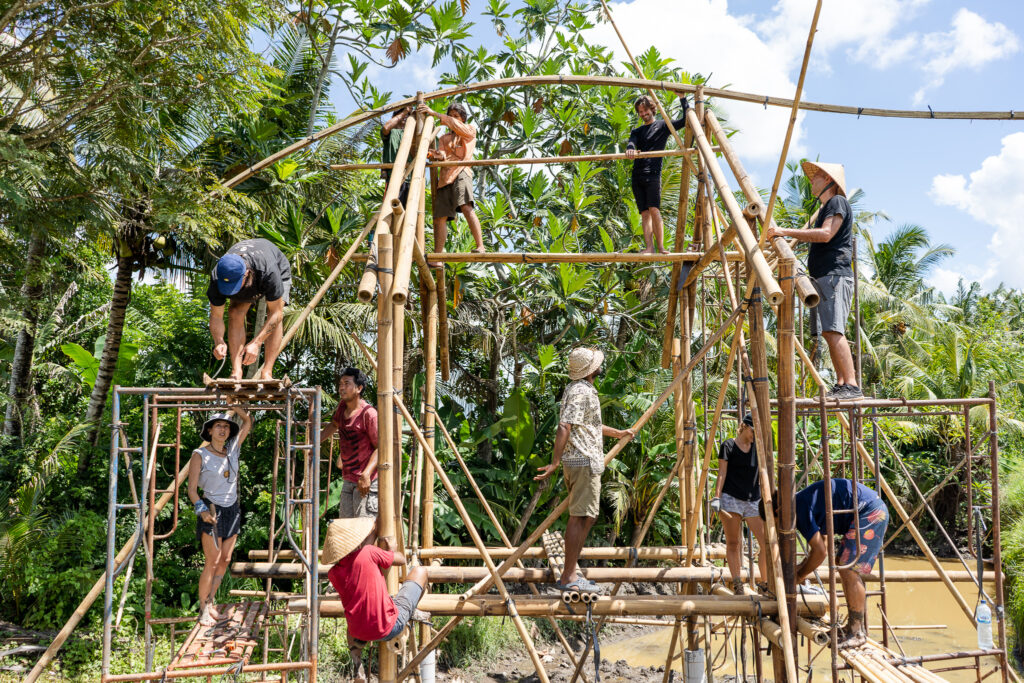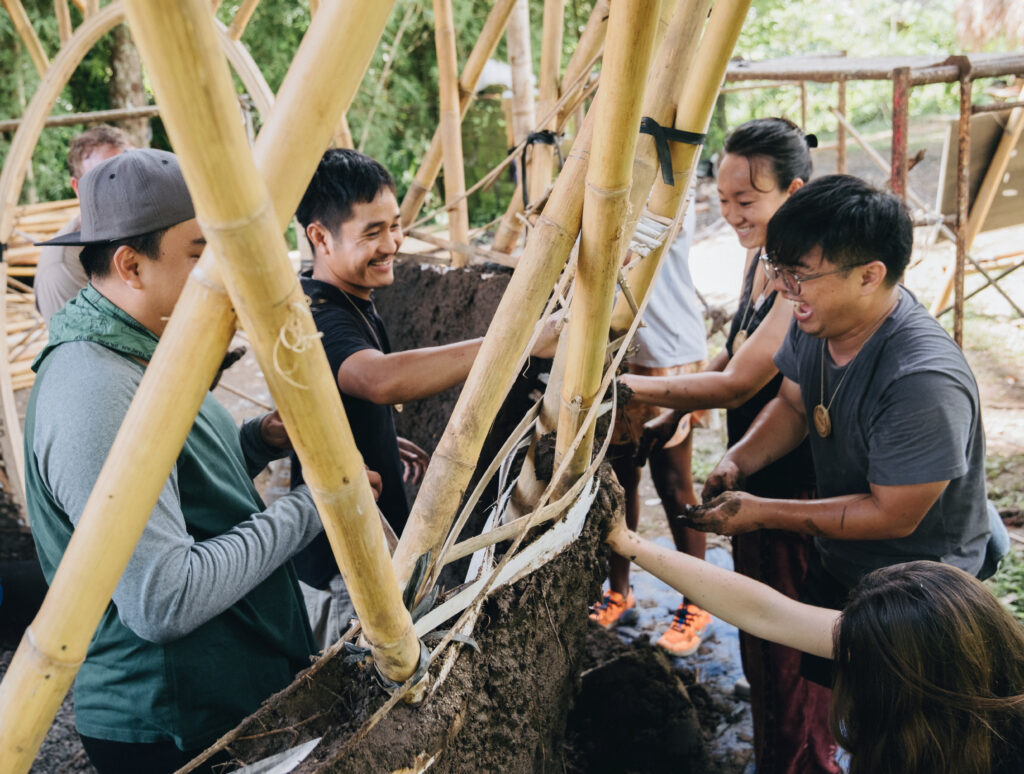Innovative Flattened Bamboo Roofing for Sustainable Architecture
By Luiz Fellipe Machado | July 18, 2023 | Construction -
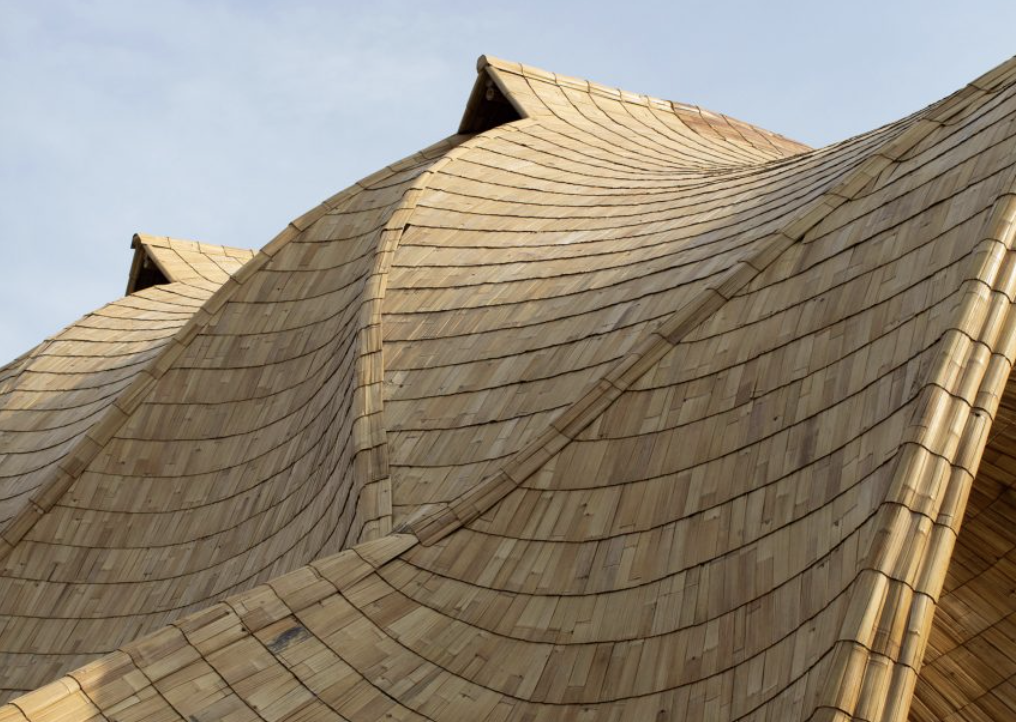
Explore the history, versatility, and eco-friendliness of Flattened Bamboo Shingles in modern and traditional bamboo architecture. Delve into its pros and cons while learning, step-by-step, how to make your own Pelupuh system.
Many roofing systems have been used throughout the years to protect bamboo construction and accentuate the beauty and ambiance of the space. Among this variety of systems, one stands out as an efficient and flexible solution, and best of all: it's made of bamboo!
In this article, we explore the pelupuh roofing system, the flattened bamboo roofing system widely used in bamboo architecture around the world. In this article, we cover:
- The origins of the pelupuh roofing system
- How its been used globally
- Advantages and disadvantages of this roofing system
- Step by step guide to making pelupuh shingles
The Origins Of Pelupuh
Originating from the lush landscapes of Southeast Asia, this traditional roofing system has withstood the test of time, protecting homes and sacred structures for centuries.
Particularly in Indonesia, pelupuh has long been part of the craftsmanship and cultural tradition, standing as a testament to the community's cultural identity and harmonious coexistence with the natural surroundings.
From Java to Kalimantan, the pelupuh roofing system has left its mark on Indonesia's architectural terrain. The technique has been adopted in Javanese Joglo houses and the longhouses of Dayak communities, adding character to their communal dwellings, Rumah Panjang. Even in Bali, Pelupuh has found widespread use in traditional temples, community spaces, and household compounds.

The pelupuh system has also spread to South America, finding resonance with indigenous architectural traditions. Indigenous communities in regions like Colombia and Ecuador have adapted it to suit their unique contexts, often as wall systems or underlayers for the main roofing system. The use of flattened bamboo can also be found on the bahareque walls of houses in southeastern Colombia and the Malocas roofs of the Kayapo Indians in Brazil.
While rooted in tradition, the pelupuh has traveled its journey, ultimately finding a place in modern architecture and bridging the gap between heritage and innovation. Some contemporary interpretations of flattened bamboo can be seen in the design of resorts, houses, and public spaces in Indonesia and across the globe, incorporating traditional wisdom into new designs and paying homage to its heritage.
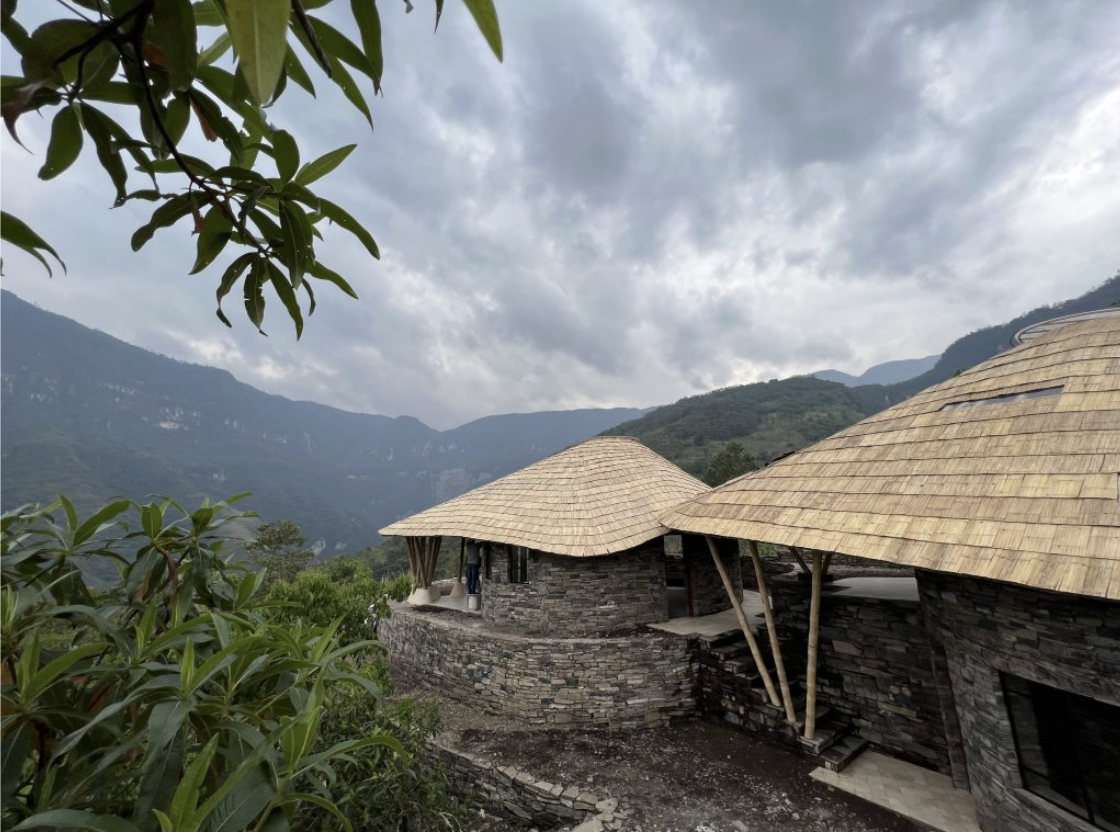
Unraveling The Magnificence Of Pelupuh – Global Usage
The Pelupuh roofing system comprises interlaced layers of flattened bamboo, created by splitting bamboo poles lengthwise and flattening them into shingles. These layers are interspersed with a synthetic waterproofing membrane to prevent moisture intrusion.
The assembly of these components creates an impressive architectural element with the graceful interplay of bamboo parts. When used in a well-designed bamboo structure, this seamless integration enhances the roof shape and fosters a warm interior ambiance.
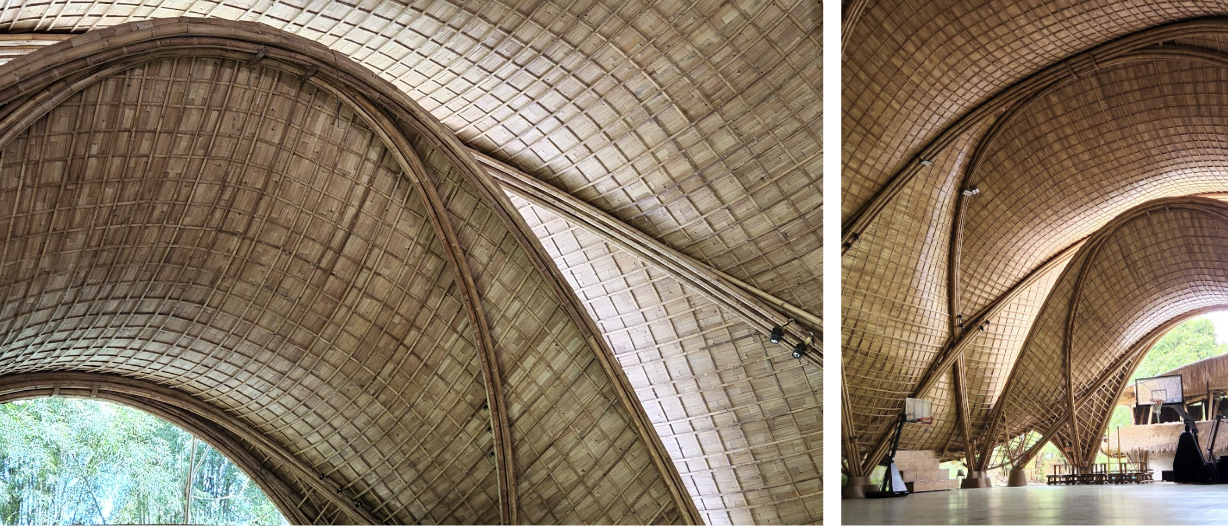
The Arc at Green School, one of the Ibuku design firm's bamboo masterpieces, uses pelupuh as one the main elements of the building. Serving as a tensioned skin that connects the structural bones of the bamboo arches, flattened bamboo is placed from the inside in a direction that holds in place the gridshell. This strengthens the overall stiffness of the structure. Looking at the exterior layer, the pattern of the bamboo shingles gives continuity and accentuates the sinuous curves of the roof.
The pelupuh technique has also been applied in a bamboo dome structure in India, designed by STUDIOARO. The flattened bamboo shingles were arranged longitudinally, pointing towards the dome's center. This creates a delightful natural pattern from the top that fits well with the curved lines of the roof.
Advantages and Disadvantages Of The Pelupuh Roofing System
Advantages of using Pelupuh as a roofing system:
- Most adaptable to organic shapes, the pelupuh roofing system offers unparalleled design flexibility, allowing for the creation of organic shapes and curvilinear rooflines.
- The Pelupuh roofing system offers a distinct advantage by eliminating the requirement for significant roof inclination. This alleviates the challenges faced by designers who often find themselves constrained to conform their project's ideal roof slope to fit within the specifications of conventional roof systems.
- Its maintenance is relatively simple and involves changing only the outer layer every 5 to 8 years. This is the time when it begins to deteriorate due to the action of rain and direct sunlight.
- Due to its lightness, ease of storage, and transport, it stands out as a good alternative for maximizing the logistics of projects in remote areas.
Disadvantages of using pelupuh as a roofing system:
- Like any other bamboo system, if not properly treated and maintained, pelupuh can be susceptible to wood-eating insects, such as bamboo mites and mealybugs, as well as decay caused by fungal growth.
- It's essential to be aware that the outer layer of the system may require replacement between 5 to 8 years, depending on its exposure to moisture, sunlight, extreme temperature variations and leaf litter from trees. Regular inspections and maintenance are crucial to assess the condition and ensure the longevity of pelupuh roofing.

Craftsmanship at Its Finest - a guide to make your own flatten bamboo shingle
Now, as you carefully consider your context and recognize the potential of pelupuh as a valuable technique for your bamboo projects, it's time to reveal the amazing beauty and skillful craftsmanship that goes into pelupuh production. From its symmetrical design to its rhythmic patterns, each flattened bamboo component is meticulously crafted to create a stunning visual spectacle.
Starting with a simple bamboo pole of Gigantochloa apus, Guadua angustifolia, or any other species with a thick culm wall, with the desired length, follow the steps below:
- Make an initial cut in the culm, dividing it in half lengthwise using an Ax or a Machete, and with a help of a shovel open the culm longitudinally.
- Make a series of cuts into the culm wall from the inside out using a hatchet, making sure to not pierce the entire culm wall. Instead, it should be cut just enough for the section to be flattened out.
- With the culm already flattened, use a long shovel or a machete to remove the diaphragms present in the nodes. This will make the inside part look smoother
- With the long shingles made, you can now resize them to the desired length and combine them in a 3 layer pattern. The first layer will be flattened bamboo, the second with an asphalt liner, and the last with the flattened bamboo again. Attach all the layers to the rafters using a nail gun.
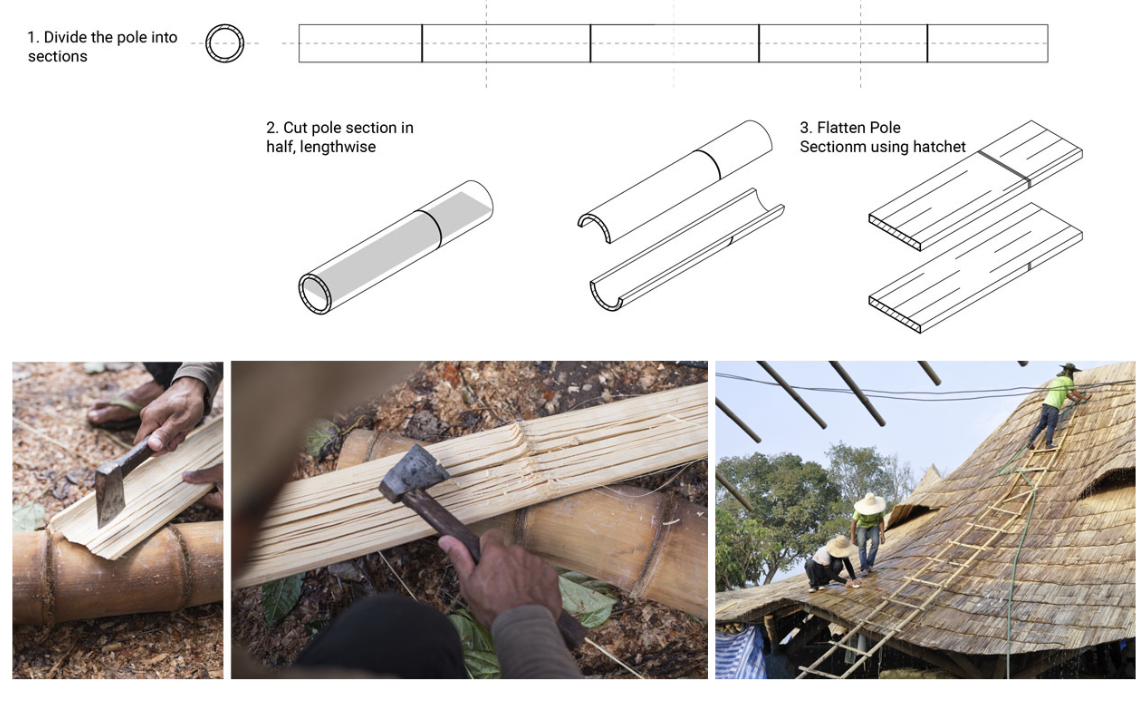
It is crucial to note that a careful selection of mature bamboo culms, proper pole treatment, and good storage are critical safeguards that will ensure the material's durability and structural performance. If well maintained and the outer layer periodically replaced, the synthetic waterproof membrane system can last 20-25 years.
In an era of environmental consciousness, pelupuh stands tall as an embodiment of sustainable architecture and a ray of hope for a greener future. By harnessing the inherent qualities of bamboo, this roofing system offers a convincing alternative to reduce the negative environmental effect of building by utilizing a natural resource as a roofing system.
From its renewable and fast-growing nature to its carbon sequestration properties, a bamboo roofing system shows up as an alternative to conventional construction materials. Since it requires fewer resources and energy in its production, compared to other traditional alternatives, the use of pelupuh in construction can actively contribute to mitigating the impact of the construction and reduce the amount of waste normally found in construction sites.
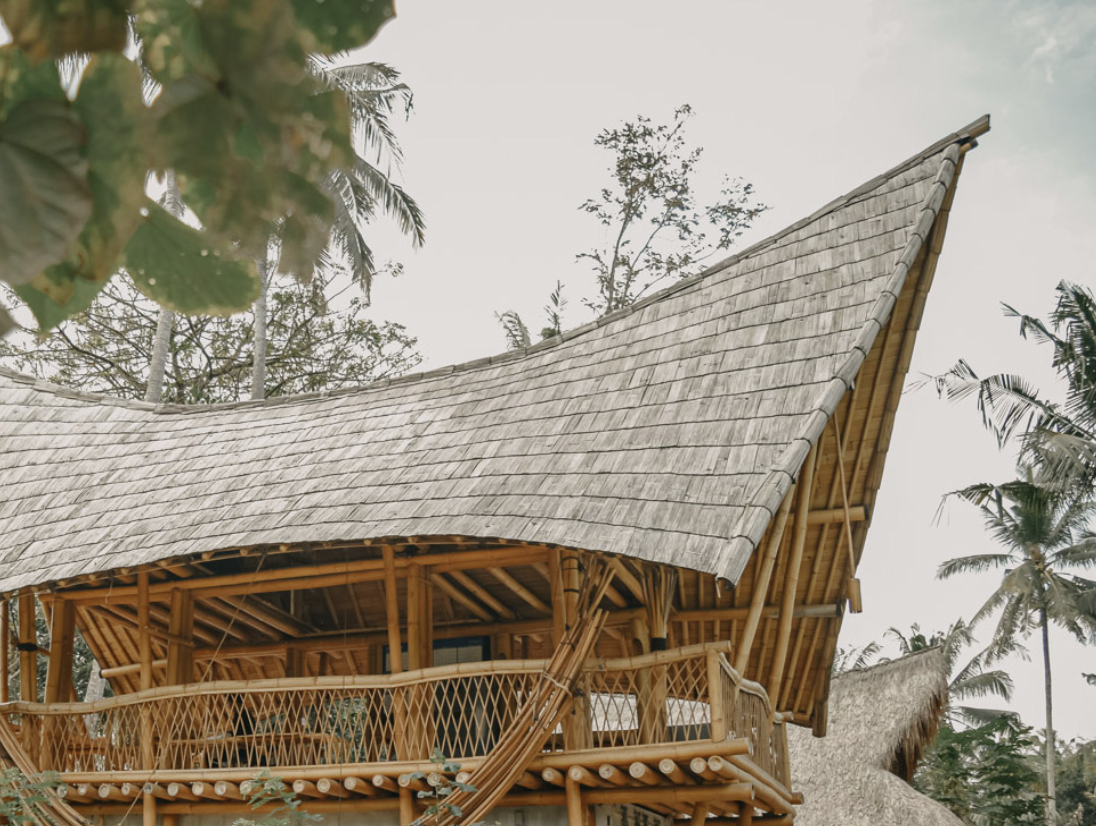
The use of pelupuh not only offers aesthetic and technical advantages as a natural roof solution but also aligns with the principles of sustainability, promoting a harmonious coexistence between human needs and the natural world.
____________________
Interested in learning more about designing and building with bamboo? We will be taking a deeper look at all of these topics and more during our next online and in-person courses in Bali. Check out our upcoming courses here: https://www.bamboou.com/courses
Credits:
Cover Image of The Arc designed by IBUKU, Photographed by Tommaso Riva
Other Images courtesy of Bamboo U and Luiz Fellipe Machado

Luiz is an architect and educator from Brazil, specializing in Bamboo Design and Permaculture. With experience managing projects in Europe and South America, Luiz integrates natural materials and original approaches whenever possible into his work. For Luiz, education is a joyous pursuit based on collaboration, sharing, and creativity.
JUNE 13-24, 2025
The 11 Day Bamboo Build & Design Course in Bali
In 11 days, we'll show you how to build bamboo structures we’ll share all that it takes to build with nature.
Start Anytime
The Bamboo Harvesting Course
The Bamboo Harvesting Course is an online step-by-step training to harvest and care for your bamboo clumps to ensure their longevity and productivity. This maximizes the potential of this beautiful grass as a rapidly renewable resource.Whether you are an architect, builder, or sustainability enthusiast, this mini course will enable you to utilize this rapidly regenerative resource as a durable construction material.It will help remove any fear or doubt about the durability of bamboo and help you build reputable bamboo structures that stand the test of time!












